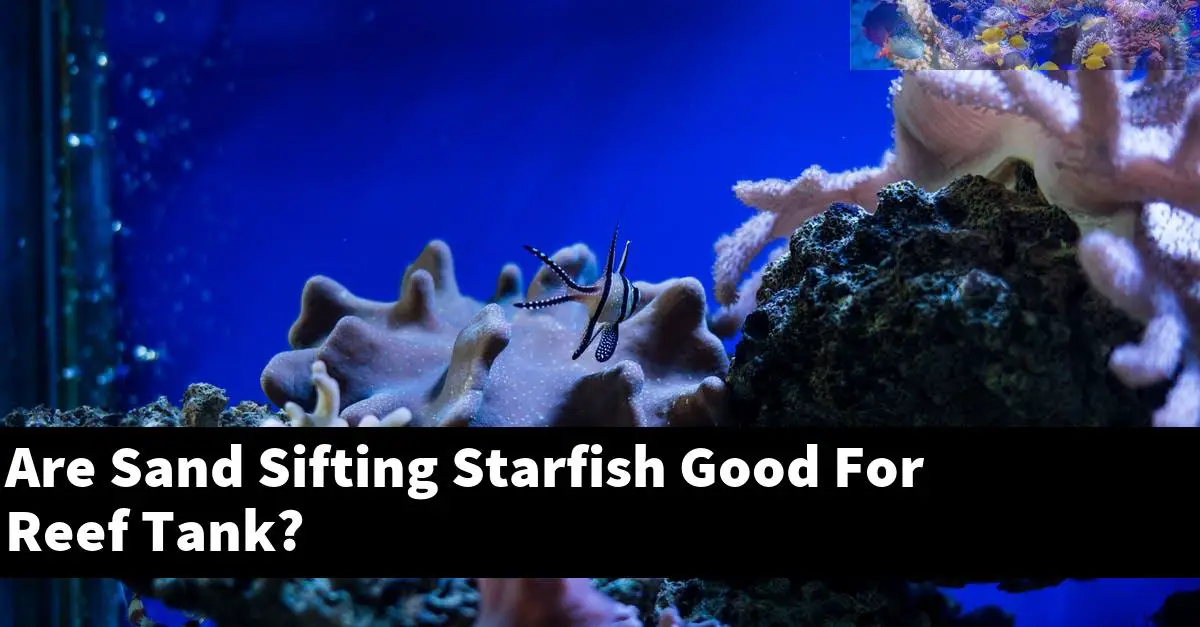Sand sifting starfish are good for reef tanks because they help to keep the sand clean and free of debris. They also help to aerate the sand and keep it from compacting.
What are the benefits of having sand sifting starfish in a reef tank?
A sand sifting starfish can help to filter the sand in your reef tank, providing essential nutrients and removing harmful organisms. They are also often very colorful and add a splash of color to your tank.
How does sand sifting starfish help to keep a reef tank clean?
A sand sifting starfish helps to keep a reef tank clean by removing uneaten food and waste from the tank. This starfish can also detect and remove harmful bacteria and other organisms that can cause problems for the tank inhabitants.
What are the drawbacks of having sand sifting starfish in a reef tank?
One potential drawback of having sand sifting starfish in a reef tank is that they can remove large amounts of sand from the tank, potentially causing the tank to become too sandy and hazardous to inhabit.
Instant Ocean Reef Crystals Reef Salt For 160 Gallons, Enriched Formulation For Aquariums
$66.79 (as of June 22, 2025 02:30 GMT +03:00 - More infoProduct prices and availability are accurate as of the date/time indicated and are subject to change. Any price and availability information displayed on [relevant Amazon Site(s), as applicable] at the time of purchase will apply to the purchase of this product.)ReefHD Reef Flux Anti-Fungal Treatment (100 gal)
Red Sea Reef Energy Plus 500ml (AB+) All in One Coral Food for Saltwater Aquarium Marine Reef Tanks | Food for Soft, LPS, SPS, and Non-Photosynthetic Corals
$29.99 ($3.55 / Fl Oz) (as of June 22, 2025 02:30 GMT +03:00 - More infoProduct prices and availability are accurate as of the date/time indicated and are subject to change. Any price and availability information displayed on [relevant Amazon Site(s), as applicable] at the time of purchase will apply to the purchase of this product.)Additionally, sand sifting starfish are known to eat other reef fish and coral, so it’s important to keep them in a tank with plenty of other fish and coral if you want them to be happy and healthy.
How often does a sand sifting starfish need to be fed?
Sand sifting starfish are obligate carnivores and require a diet of live prey to maintain their energy levels and health. They typically feed on small crustaceans and other small invertebrates but can consume larger prey if necessary.
Sand sifting starfish typically feed every few days but can go for up to several weeks without food.
What is the best type of food for a sand sifting starfish?
Sand sifting starfish, or comb sea star, eats a variety of foods, including small crustaceans, worms, and small fish. The starfish feeds by capturing and eating these small creatures from the sand.
How can you tell if your sand sifting starfish is healthy?
One way to determine the health of a sand sifting starfish is to look for any signs of injury or infection. If the starfish is exhibiting any of these signs, it may be in need of medical attention.
Injuries can include dried out or open areas on the starfish’s body, lumps or lesions, and changes in color or texture. Infections can be caused by a number of things, including bacteria, protozoa, or viruses.
If any of these symptoms are present, the starfish may require treatment.
What are some common problems that can occur with sand sifting starfish in reef tanks?
There are a number of common problems that can occur when sand sifting starfish are kept in reef tanks. These problems can include:
- Poor swimming ability
- Difficulty feeding
- Poor reproductive success
- Damaged coral
poor swimming ability can be caused by a number of factors, including a lack of swimming muscles, difficulty maneuvering in the tank environment, and difficulty getting to the food.
Difficulty feeding can be caused by a number of factors, including a lack of food, difficulty locating food, and obstruction of the digestive system.
Poor reproductive success can be caused by a number of factors, including a lack of space, overcrowding, and physical damage to the reproductive organs.
Damaged coral can be caused by a number of factors, including a lack of care and attention, poor water quality, and physical damage.
Summary
A sand sifting starfish helps to clean the sand and keep it free of debris in a reef tank.















